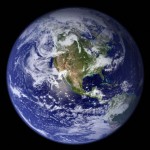
CD and DVD duplication has an inevitable environmental impact. Taking care in the choice of print method and packaging materials can go a long way to minimizing this.
The inherent environmental cost of producing DVDs and CDs is something that most people commissioning either CD duplication or CD replication may be aware of, though the full extent of this is often not recognised. It may be obvious that a DVD is made of plastic (polycarbonate to be precise) and that this must have some impact on the environment. In addition to this, DVDs have a reflective layer of aluminium which is sputtered on to the polycarbonate surface. A DVDR disc also has a layer of organic dye added (the recording layer). Organic in this context does not mean wholesome – it refers to the branch of chemistry that deals with these hazardous hydro carbons!
The process of printing (or decorating) the disc is one that arguably has the most potential for environmental cost. Whether it is DVDR duplication or DVD replication, the disc will require some printing so it can be identified (and to look good too!). The options for printing are varied but the most common for large volume runs are screen printing (sometimes referred to as silkscreen) and litho printing (more correctly referred to as offset). Both processes involve a great deal of waste and the flushing and disposal of environmentally damaging chemicals. Screen and offset printing start by exposing film of the artwork (involving the use of toxic chemicals and plastics) and the making of screens or plates. Screens have to be washed out after use resulting in more chemicals being flushed away. In addition screen and offset inks are inherently toxic and cause more hazardous waste to be dumped into the environment.
Finally before the job can be printed the printer needs to be run in to settle down, usually requiring up to 50 or 100 DVDs to be printed before the print is satisfactory.
In stark contrast to this, the latest generation of digital DVD printers require no plates, films or screens and no hazardous chemicals in the setup process. A DVD duplication job can be printed directly from the digital artwork with no setup. Although it is possible to print replicated DVDs this method is ideally suited to the on demand, low volume run size of DVD duplication. The machine prints the first disc exactly the same as all subsequent discs meaning that there is no disc wastage either.
If your next DVD production could benefit from lower environmental cost, and quicker turnaround and not to speak of the highest 4 colour print quality available you should look no further than digital printing. If you want your DVD duplication project to look as good or better than a replicated DVD found in shops then this is also the best option.


